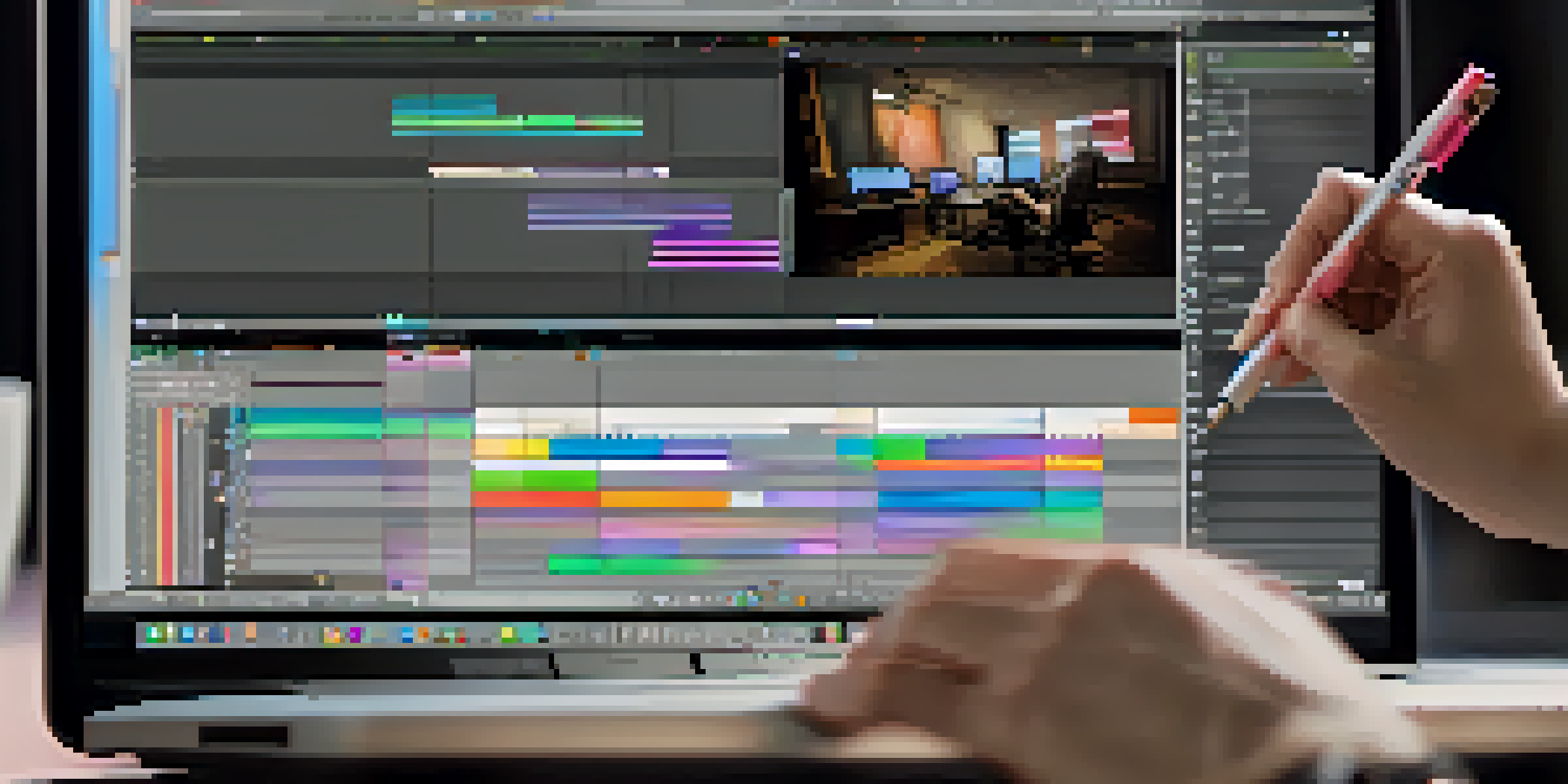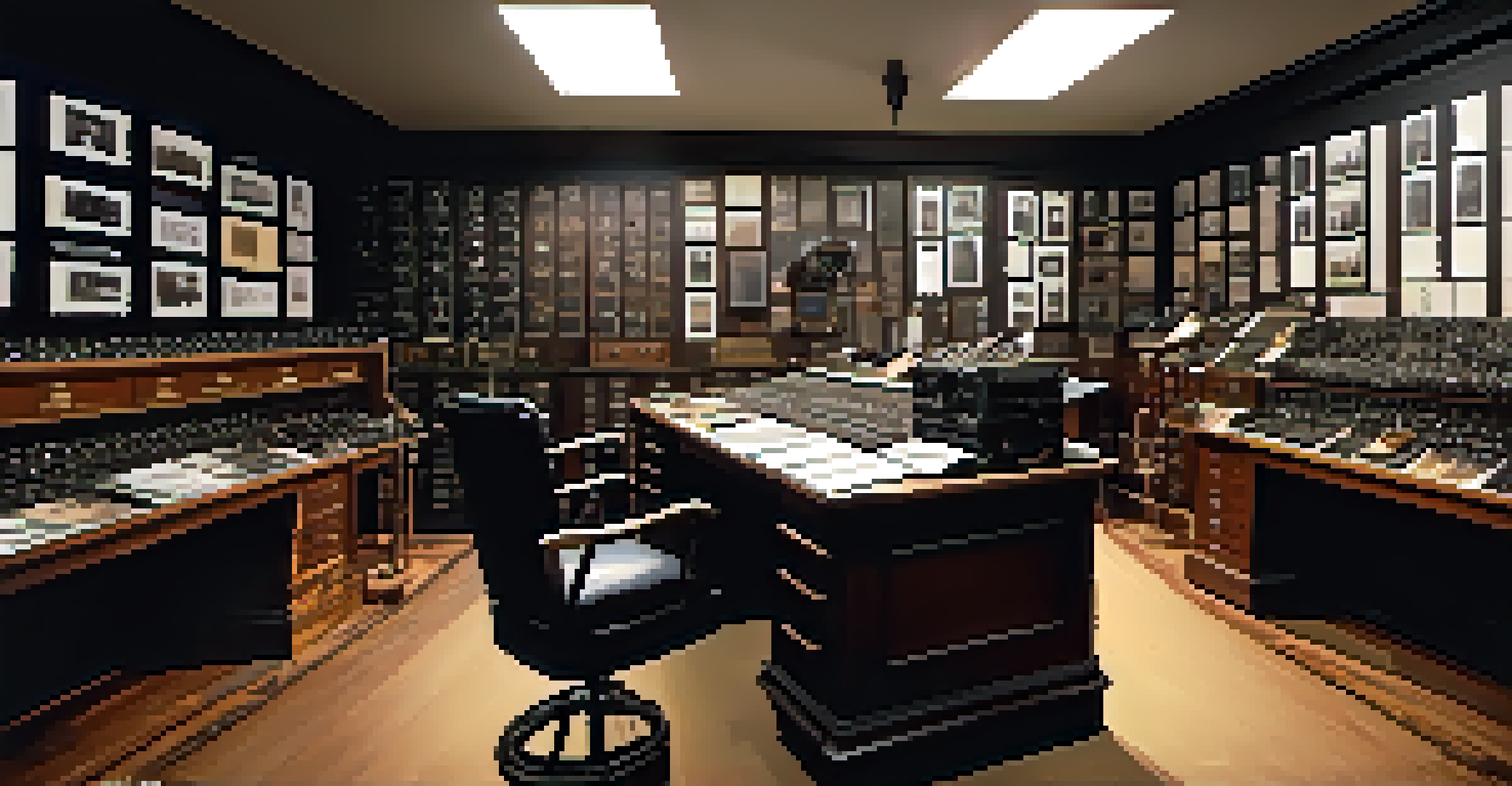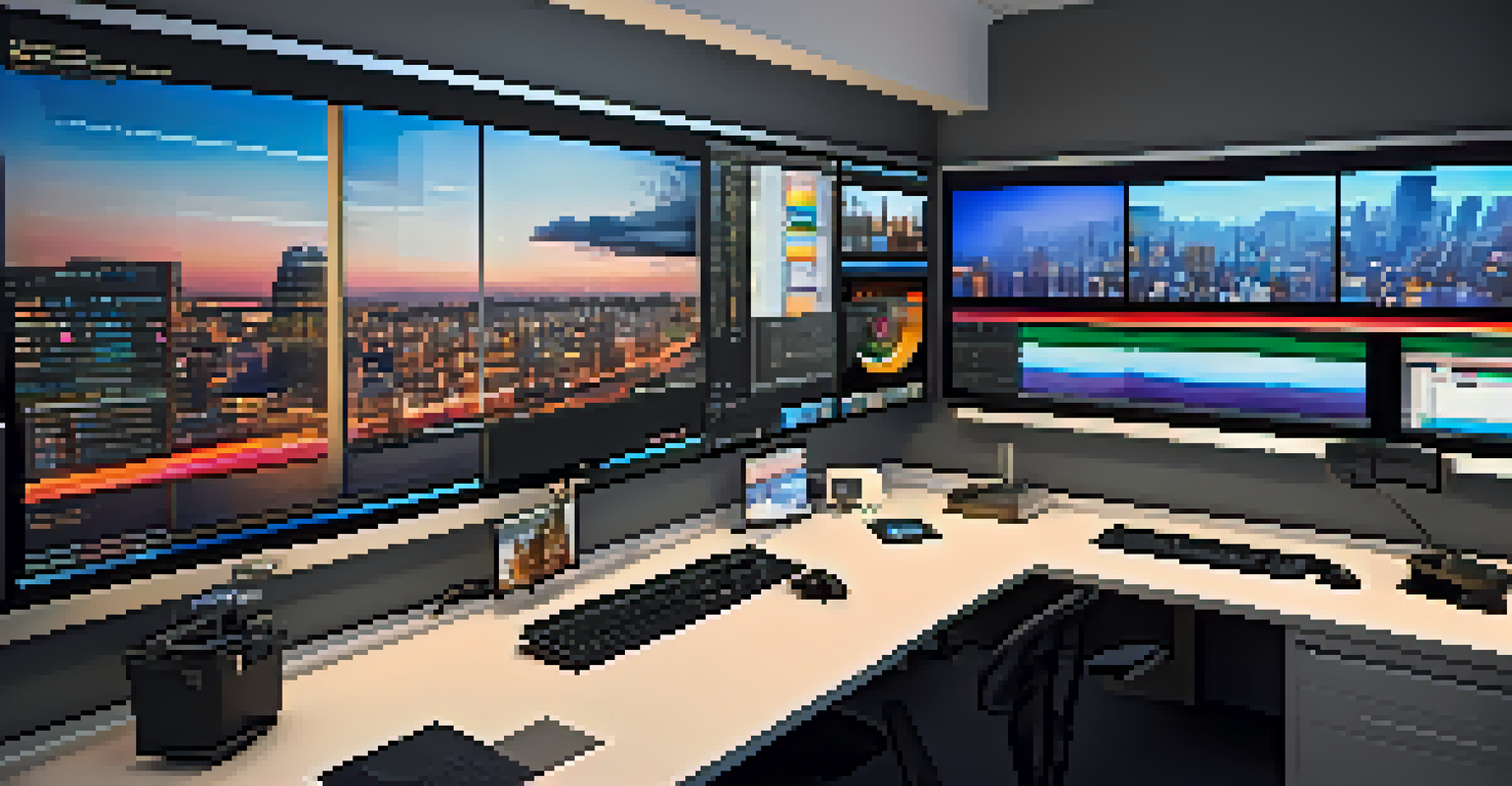The Evolution of Film Editing Techniques Through the Decades

The Silent Era: Crafting Stories Without Sound
In the early days of cinema, films were silent, relying heavily on visual storytelling. Editors had to be creative, using techniques like cross-cutting to convey parallel actions. The pace and rhythm of a scene were essential, as the absence of dialogue meant that every cut had to carry emotional weight.
Editing is like a magic trick. You can make people see things that aren’t there, and you can make them feel things that aren’t true.
One famous example is D.W. Griffith's 'The Birth of a Nation' (1915), which showcased innovative editing techniques like the close-up. These methods laid the groundwork for future filmmakers, proving that editing could elevate a film's narrative impact without any spoken words.
As audiences grew accustomed to the medium, editors began to experiment more, setting the stage for the dynamic editing styles that would emerge in the following decades.
The Golden Age: Montage and Emotional Impact
The 1920s and 1930s saw the rise of the montage, a technique that juxtaposes various shots to evoke emotions or convey ideas. Sergei Eisenstein’s 'Battleship Potemkin' (1925) is a prime example, using rapid cuts to create tension and highlight the brutality of oppression.

During this time, editing became more sophisticated, with editors like Vidor and Murch pioneering techniques that would define the art form. The emotional resonance achieved through strategic cuts helped filmmakers tell richer, more complex stories.
Editing Evolution Reflects Technology
The progression of film editing techniques mirrors advancements in technology and shifts in storytelling approaches throughout cinema history.
This era emphasized the power of editing as a narrative device, establishing it as a crucial element in filmmaking that could manipulate time and space for dramatic effect.
The Post-War Era: From Linear to Non-Linear Editing
The 1950s and 1960s marked a shift in film editing, as filmmakers began to embrace non-linear storytelling. Directors like François Truffaut and Jean-Luc Godard challenged traditional narratives, using jump cuts and fragmented sequences to engage viewers in a new way.
The editor is the person who assembles the film, and through the editing process, the film is born.
This era also saw the introduction of technology that transformed the editing process, such as the Moviola and later, the flatbed editor. These innovations allowed for greater precision and creativity, making it easier for editors to experiment with pacing and visual storytelling.
As filmmakers pushed boundaries, audiences were invited to experience films in a more active way, encouraging them to piece together narratives from disjointed scenes.
The Rise of Digital Editing: Accessibility and Innovation
The late 1990s and early 2000s witnessed a major technological revolution with the advent of digital editing software. Programs like Avid Media Composer and Adobe Premiere Pro made editing more accessible, allowing independent filmmakers to produce high-quality films without massive budgets.
This democratization of filmmaking led to an explosion of creativity and experimentation in editing techniques. Directors could now manipulate footage in real-time, quickly testing different cuts and transitions, which greatly accelerated the editing process.
Editors: From Invisible to Key Players
Film editors have transitioned from behind-the-scenes roles to recognized storytellers whose expertise significantly shapes a film's narrative.
Digital editing also introduced new techniques, such as non-destructive editing and advanced visual effects, pushing the boundaries of what was possible in film production.
Modern Editing: The Influence of Streaming and Short Form
As streaming platforms like Netflix and Hulu gained prominence, the editing style began to evolve to cater to new viewing habits. Editors now focus on keeping audiences engaged with tighter cuts and faster pacing, reflecting the shorter attention spans of viewers today.
Moreover, the rise of short-form content on platforms like TikTok and Instagram has influenced traditional narrative structures. Editors are increasingly blending techniques from various genres, using rapid cuts, text overlays, and unconventional transitions to create captivating experiences.
This shift has encouraged filmmakers to think outside the box, as they adapt their editing styles to meet the demands of a digital-first audience.
The Role of Editors: From Invisible to Essential
Historically, film editors often worked behind the scenes, with their contributions going largely unnoticed. However, as the importance of storytelling through editing became clear, editors started to gain recognition as essential collaborators in the filmmaking process.
Today, editors are seen as storytellers in their own right, with the ability to shape the narrative and emotional arc of a film. Their expertise in pacing, timing, and structure can make or break a movie, making them vital to the creative team.
AI is Shaping Future Editing Trends
The integration of artificial intelligence in editing processes is revolutionizing workflows and allowing editors to focus more on creative storytelling.
This evolving perception has led to greater appreciation for the craft of editing, with editors now receiving accolades and awards for their work, highlighting their crucial role in the filmmaking process.
Future Trends: AI and the Next Frontier in Editing
As technology continues to advance, artificial intelligence is beginning to play a role in the editing process. AI tools can analyze footage, suggest cuts, and even create rough edits, streamlining the workflow for editors.
While this may raise concerns about the future of traditional editing roles, it also opens up opportunities for editors to focus on the more creative aspects of their work. By automating repetitive tasks, editors can dedicate more time to storytelling and refining the emotional impact of their films.

Looking ahead, the integration of AI in editing promises to redefine the landscape of filmmaking, allowing for innovative techniques and possibilities that we have yet to fully explore.
Conclusion: A Journey Through Time and Techniques
The evolution of film editing techniques is a fascinating journey that reflects broader changes in technology, culture, and storytelling. From the silent era's simple cuts to today's complex digital workflows, each decade has brought new challenges and innovations.
As filmmakers continue to push the boundaries of creativity, editing remains a pivotal element in shaping how stories are told on screen. The future of film editing looks bright, as technology and artistry continue to intertwine in exciting ways.
Ultimately, the art of editing will always be about connecting with audiences, drawing them into the narrative, and evoking emotions that resonate long after the credits roll.